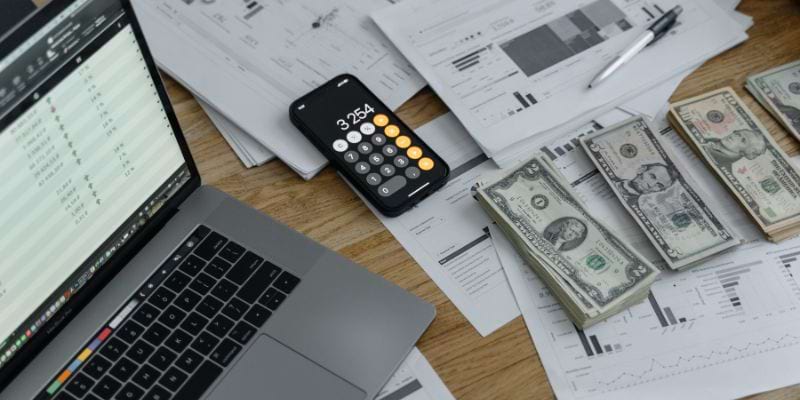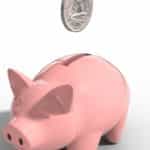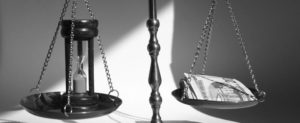CAPEX: Capital Expenditure

CAPEX (Capital Expenditure): This article explains the term CAPEX or Capital Expenditure in a practical way. The article contains information about the meaning of the term CAPEX and how to calculate it, along with examples, its usefulness and the risk and rewards of CAPEX. Enjoy reading!
What is CAPEX or Capital Expenditure in Finance? The meaning
CAPEX stands for Capital Expenditure, or Capital Expense, and includes the money organizations spend to purchase fixed assets.
Fixed assets include vehicles, buildings, raw materials, equipment and land (PPE – property, plant and equipment).
Expenses are considered capital expenditures when things are purchased new or when money is used to extend the useful life of existing assets, such as repairing a roof or facade.
CAPEX versus OPEX
Capital Expenditure or Capital Expense (CAPEX) is different from Operating Expenses (OPEX).
OPEX includes short term expenditure on day to day operations, for example, electricity or cleaning.
The difference between CAPEX and OPEX is not always immediately obvious. Repaving a shopping center parking lot can fall into either category. A decisive factor in these matters is the financial benefit gained. When the financial benefit continues into a new fiscal year, the expense is labeled as CAPEX.
The usefulness of CAPEX
Capital expenditures are important because this is by which a company buys fixed assets. These fixed assets are important to a business. The decisions that have to be made about it are therefore also important.
Large expenses are often formalized during, for example, the annual shareholders meeting, or a special meeting of the board of directors. CAPEX can be seen on the cash flow statement under ‘investments’.
Examples of CAPEX
CAPEX costs cannot be deducted for tax purposes in the year in which they are paid. The rule is that if the useful life of the asset is longer than the tax year, the cost must be capitalized. That’s why CAPEX investments are not immediately reported on income statements, but treated as an asset on the balance sheet (more on this later).
Examples of types of capital expenditures are:
- Acquiring fixed and sometimes intangible assets, such as a new building or a car
- Repairing existing assets to extend the useful life
- Upgrading existing assets, such as a computer network
- Preparing a resource for use in business
- Restoring or adapting assets to new objectives
These categories include, for example:
- Furniture used to furnish offices
- Vehicles used to transport goods or collect customers and staff
- Computers used to support the operational aspects of a business
- Land used for further development and building plans
Special consideration
CAPEX is thus used for analyzing a company’s investments in fixed assets, but it can also be used in various ratios for business analysis.
An example of this is the cash flow-capital expenditure (CF-to-CAPEX) ratio. This ratio refers to a company’s ability to acquire long-term assets using free cash flow.
The CF-to-CAPEX typically fluctuates more as companies go through cycles of large and small capital expenditures.
A ratio greater than 1 would indicate that a company’s operations produce enough cash to finance the acquisition of assets.
A low ratio may indicate that there are problems with cash inflows and thus the purchase of capital goods. A company with a ratio that falls below one may need to raise outside cash, such as loans, to enable the purchase of capital assets.
Risks and rewards
As with virtually anything in business, there are risks and rewards with capital expenditures. One reward is improved business efficiency when the right investments are made. On the other hand, an organization may not perform as expected after the investment.
Another reward of making the right investments is gaining a competitive advantage. But this also has the downside that losses arise when the investments do not deliver what was expected. These resources could have been used in a different, better way.
That is why it is important to develop a solid investment plan. Capital expenditures often represent certain investments. In this context, the term return, or ROI, is often used. Therefore, many organizations consider several factors, including: costs, market expectations, future growth and more.
Useful life
Useful life is a recurring term when it comes to calculating CAPEX. It is important to understand this concept well. Useful life refers to the estimated shelf life of a specific resource. Because capital expenditures are long-term investments, the assets covered by CAPEX must have a useful life of one year or more.
In many countries, the tax authorities themselves define the useful life of certain resources. The IRS considers the life of a a car in the US 5 years. A new building has a lifespan of 39 years. So the cost of those assets can be divided by the useful life to determine how much money can be deducted each year as depreciation.
Obviously, the determined service life does not mean that the car stops after 5 years and a day. Or that a building collapses after 39 years and a month. It just means that this time span can be used for the depreciation of the cost of the resources.
These guidelines on the useful life of assets are therefore very important to understand. Without a full picture of this useful life, companies are likely to miss out on significant tax benefits.
How do I calculate Capital Expenditures (CAPEX)?
CAPEX calculations can be made if information is available that is included in an organization’s cash flow statement. Without this information it is still possible, but it takes more effort.
Follow the steps below to calculate CAPEX:
1. Get the company’s financial statements in front of you
To accurately calculate capital expenditures, the financial statements for the last two years are needed. These documents contain all the data required to calculate CAPEX.
2. Identify the recorded fixed assets
Then, subtract the non-current assets on the prior year’s financial statement from the non-current assets listed for the year that ended last. The result is the change in these fixed assets. From here onwards, intangible assets should not be included as CAPEX only deals with tangible assets.
3. Identify the accumulated depreciation
Then subtract the accumulated depreciation between the two years as well. This gives the total depreciation for the year that ended last.
4. Add total depreciation
After subtracting these amounts, add the depreciation calculated in step 3 to the change in assets determined in step 2. The result is the total capital expenditure for the analyzed period of time. Using the profit and loss account and the balance sheet, the following CAPEX formula can then be applied:
CAPEX = tangible assets (current period) – tangible assets (previous period) + depreciation (current period)
Example calculation
Consider the example below. Suppose a furniture company has decided in 2022 to spend money on new equipment and an expansion of its facilities. You decide to calculate the capital expenditure and identify the data below from the financial statements.
Depreciation: 15,000 euros
PPE end of 2022: 50,000 euros
PPE early 2022: 35,000 euros
With this data it becomes possible to calculate the capital expenditure. Start by subtracting the PPE value at the beginning of the year from the PPE value at the end of the year.
The result of this is 15,000 euros. Then add this value to the depreciation expense for that year, at 15,000 euros. This will result in a total capital expenditure of EUR 30,000 for the year 2022.
Now it’s your turn
What do you think? Do you recognize the explanation about CAPEX? What capital expenditures are incurred in your work environment? Are you involved in CAPEX or OPEX? Did you know how to calculate capital expenditures? Do you have any tips or comments?
Share your experience and knowledge in the comments box below.
More information
- McConnell, J. J., & Muscarella, C. J. (1985). Corporate capital expenditure decisions and the market value of the firm. Journal of financial economics, 14(3), 399-422.
- Chung, K. H., Wright, P., & Charoenwong, C. (1998). Investment opportunities and market reaction to capital expenditure decisions. Journal of Banking & Finance, 22(1), 41-60.
- William Petty, J., Scott Jr, D. F., & Bird, M. M. (1975). The capital expenditure decision-making process of large corporations. The engineering economist, 20(3), 159-172.
- Appuhami, B. (2008). The Impact of Firms’ Capital Expenditure on Working Capital Management: An Empirical Study across Industries in Thailand. International Management Review, 4(1).
How to cite this article:
Janse, B. (2023). CAPEX: Capital Expenditure. Retrieved [insert date] from Toolshero: https://www.toolshero.com/financial-management/capex/
Original publication date: 08/23/2023 | Last update: 08/23/2023
Add a link to this page on your website:
<a href=” https://www.toolshero.com/financial-management/capex/”> Toolshero: CAPEX</a>












